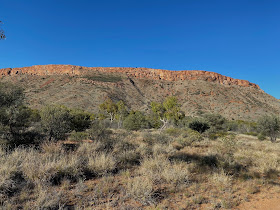 |
| Spotted-tailed Quoll |
Crossing the South Australia border into Victoria and then NSW, we had 3 nights at the Euston Club RV Camp on the banks of the Murray River, catching up with our friend Kathy Haydon for the next week. Regent Parrot, a beautiful and threatened species, is common here and we had numerous encounters, with birds often about the camping area.

 |
| Regent Parrot |

Musk Lorikeet was numerous across the river in Robinvale, Victoria. Yellow Rosella was common everywhere along the rivers.
 |
| Yellow Rosella |
 |
| Musk Lorikeet |
Next stop was Mamanga Camp in Yanga National Park outside Balranald. This time on the banks of the Murrumbidgee River. Western Gerygone, Eastern Bluebonnet, Diamond Firetail and Stubble Quail were among the birds here.
 |
| Eastern Bluebonnet |
 |
| Western Gerygone |
Pallid Cuckoo and White-winged Fairywren were in the mix.
 |
| Murray River at Euston |
 |
| Pallid Cuckoo |
 |
| White-winged Fairywren |
We moved on to Darlington Point, again camped by the river, where Long-billed Corella was common. A couple of Pink Cockatoos were spotted on the way from Balranald roadside.
 |
| Long-billed Corella |
Superb Parrot was seen and heard around our camp with 3 birds sitting nicely in Murrumbidgee Valley Regional Park.
 |
| Superb Parrot |
We overnighted in Cowra before heading north for a 3-night stay in the beautiful but poorly named Dunns Swamp Camp Ground in Wollemi National Park.
 |
| Dunns Swamp |


Stunning scenery aside, the highlight was being serenaded at night by a pair of Powerful Owls.
 |
| Powerful Owl |

This is a good spot for Rockwarbler and I saw them closely a few times.
 |
| Rockwarbler |

Other birds included Striated Thornbill and Eastern Shrike-tit. Chestnut-rumped Heathwren showed briefly but refused to be photographed. Gang Gang Cockatoo was heard a couple of times and seen briefly. A pair of Musk Duck frequented the dam.
 |
| Eastern Shrike-tit |
 |
| Musk Duck |
 |
| Striated Thornbill |
Mammals were scarce – Common Brushtail about the camp and Red-necked Wallaby.
 |
| Common Brushtail |
 |
| Red-necked Wallaby |
Our final camp was further north – Mulligans Camp in Gibralter Range National Park. Red-browedTreecreeper showed nicely during our first hike, to The Needles.
 |
| Red-browed Treecreeper |
.jpg) |
| Gibralter Range |


Scarlet Robin and Rose Robin - the latter singing so evidently breeding and not on migration - were about the campground.
 |
| Rose Robin |
 |
| Scarlet Robin |
In a heath patch on the 9km Tree Fern Loop track, a pair of Southern Emu-wren provided entertainment.
 |
| Southern Emu-wren (female, male below) |

The stars of the place though were the mammals. Spotted-tailed Quoll was known to haunt the campground at night, visiting camp sites in search of food. Other vistitors were seeing them during our stay so on the final night, having failed to locate one, I put out lures. A bowl of lemon-flavoured tuna and a bowl of spicy Indian-flavoured tuna. The latter was ignored but the former did the trick. A fine male Spotted-tailed Quoll turned up. Later in the evening a second quoll showed, evidently a different animal, smaller and more lightly coloured so probably a female.
 |
| Spotted-tailed Quoll |

 |
| Quoll scat |
The other big highlight was Parma Wallaby. I saw 15-20 small macropods over three nights and believe all were this species and none were pademelons. There has been some debate about the identity of the animals here. The two pademelon species occur in rainforest; Red-necked happily frequents dry vine scrub but it is still rainforest. This national park is in the granite highlands of northern NSW and southern Queensland - a region not favoured by pademelons. The habitat at Mulligans is open forest with a shrubby understorey; the nearest rainforest is 1.5km away. It is not pademelon habitat.
The species is not difficult to identify. It lacks the clearly defined rufous patches that are key features of Red-necked and Red-legged Pademelons. I photographed 3 different Parma Wallabies and all were uniformly coloured although they varied somewhat from rufous-grey to grey with just a hint of rufous. They showed facial patterns, unlike pademelons – especially a white line on the face. The small white hip stripe is difficult to see but is evident in one image. The clear white – not greyish – throat and breast was to me the most obvious feature pointing to Parma Wallaby. Some of the animals I saw had white tips to the tail. A darkish upper dorsal strip was evident.
 |
| Parma Wallaby |



Other mammals seen about the camp included Southern Long-nosed Bandicoot, Greater Glider and Eastern Ringtail.
 |
| Eastern Ringtail |
 |
| Southern Long-nosed Bandicoot |
We moved on to Broadwater on the NSW North Coast for the last night of our road trip.
 |
| Farewell dinner with Kathy and Glenn at Cowra |




















.jpg)



















































